Painting En Plein Air – Margaret Woods
This month Archivist, Liz McGow, focusses on a volume of watercolour drawings of British flowers by Margaret Woods (MS/504).
Published on 13th August 2025
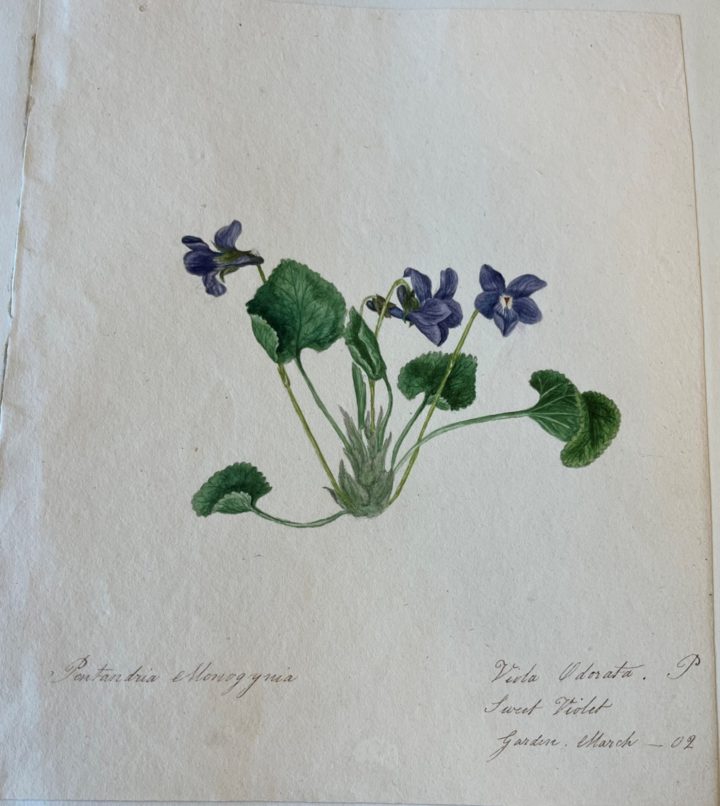
Sweet Violet (MS/504)
One day in March 1802, 24 year old Margaret Woods found a Sweet Violet in her garden and decided to paint it. Alongside the watercolour drawing she recorded the location (simply ‘garden’) as well as the scientific and common name, and the class of the plant according to Linnaeus’ sexual system. She also painted another specimen from the garden that month, a Spring Crocus, recording the same details as before.

Spring Crocus (MS/504)
The high quality of the artwork suggests that it was not the first time she had drawn from real life, and it would certainly not be the last. Over the next 3 years, this young woman regularly ventured out, clutching paper and art supplies, to paint a new specimen, and often going far beyond the garden boundaries.
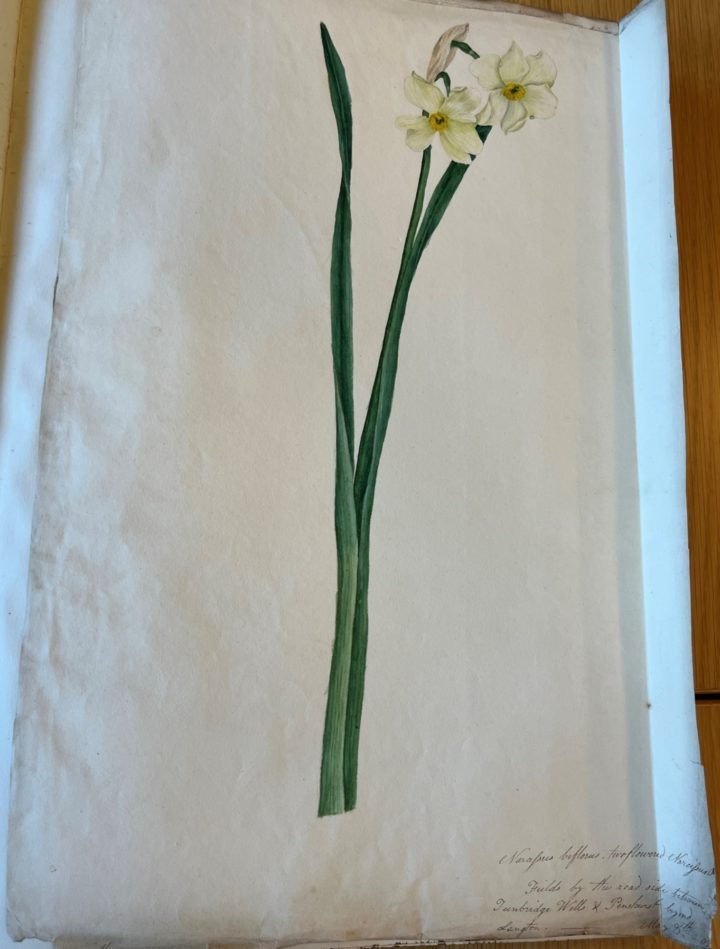
Double Headed Narcissus (MS/504)
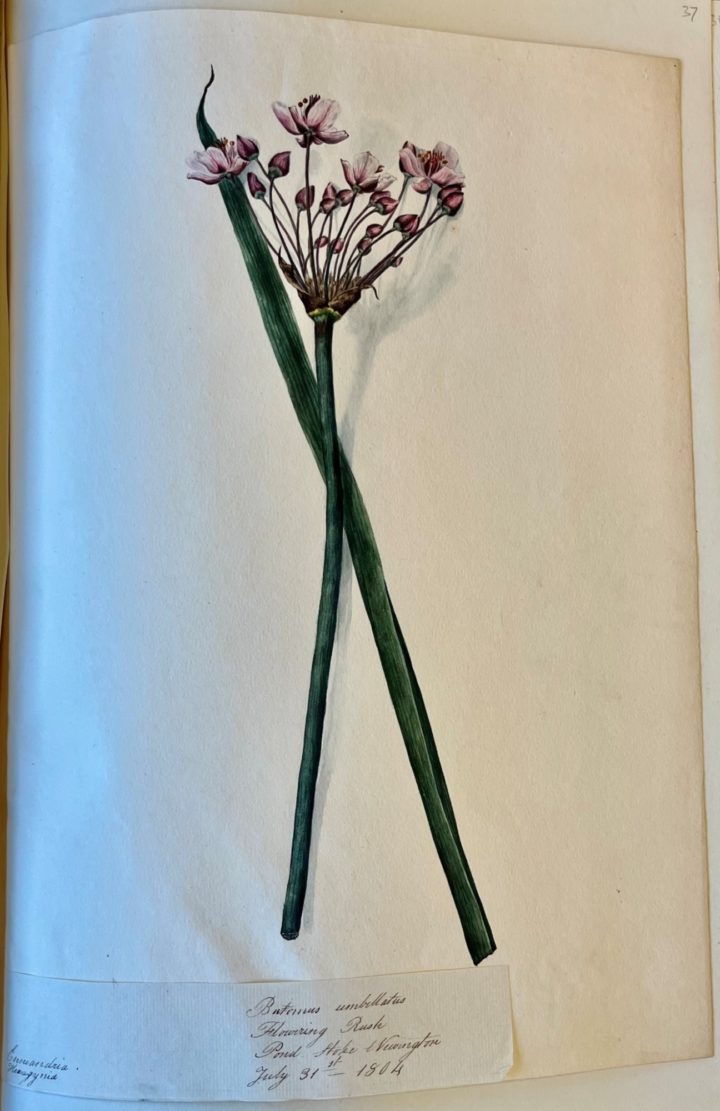
Flowering Rush (MS/504)
Margaret sometimes stayed close to her home in Stoke Newington (where she was born in 1778), visiting the pond, or Red Lion Lane, to paint a Flowering Rush or Bush Vetch. But her artistic outings seem to have taken her all over, including heading further north into Hertfordshire, as well as areas outside of London (such as Battersea, Greenwich and Dartford, which in 1802 were not classed as being in the Capital). She even travelled as far south as Tunbridge Wells (drawing a Narcissus) and west to Hounslow Heath (where she found a Fine Leaved Heath).

Tufted Vetch (MS/504)
Sometimes the localities recorded by Margaret are quite detailed (e.g. a Hairy Violet drawn on a ‘lane between Hale End on the borders of Epping Forest & woods called the Larks’, or a Wild Tulip found at ‘Muswell field near Hornsey within a few yards of the well’) whilst others are very vague. For example, one feels one would never have been able to track down the Tufted Vetch so carefully painted, which is simply labelled ‘Hertford’.
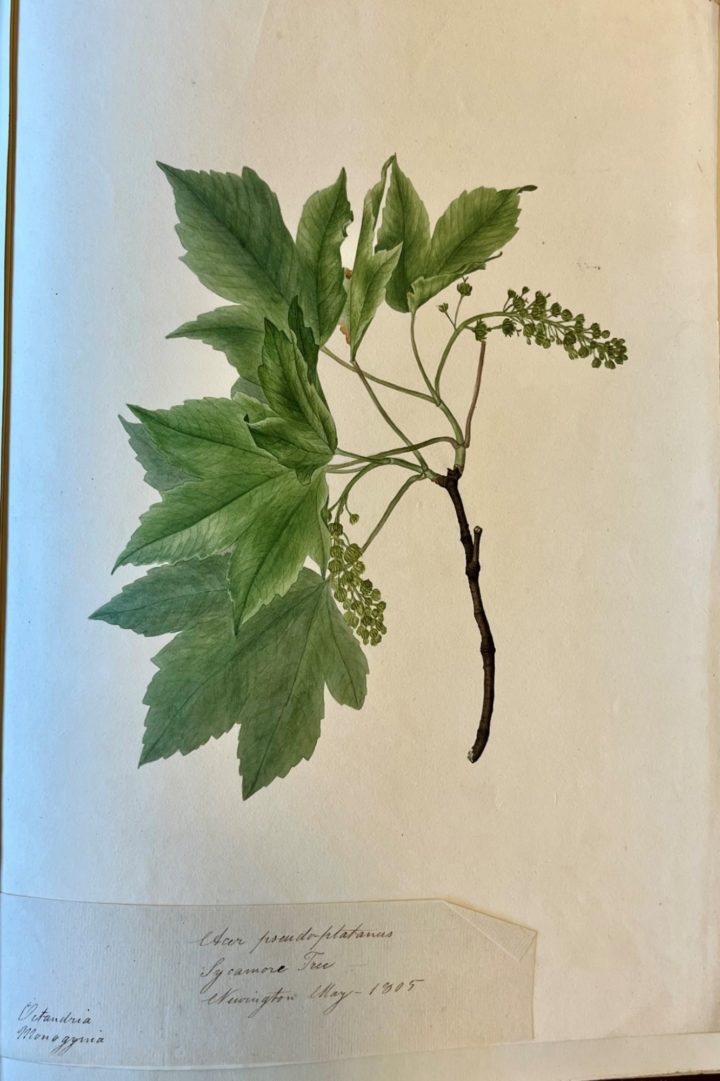
Sycamore Tree (MS/504)
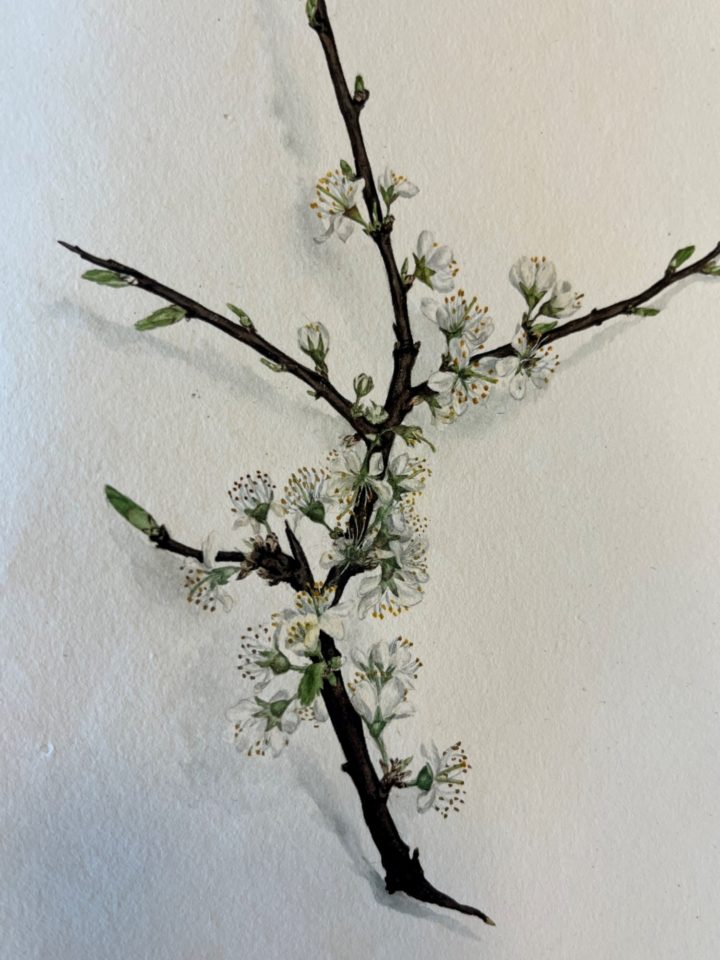
Blackthorn (MS/504)
Over the course of these numerous outings, Margaret amassed a large number of watercolour drawings of flowers, and some trees, including a Sharp Painted Snap Dragon, Musk Mallow, Knobby Rooted Saxifrage, as well as branches of Blackthorn and Sycamore trees. At some point, 65 of these drawings were pasted, mostly in chronological order, into a bound volume.
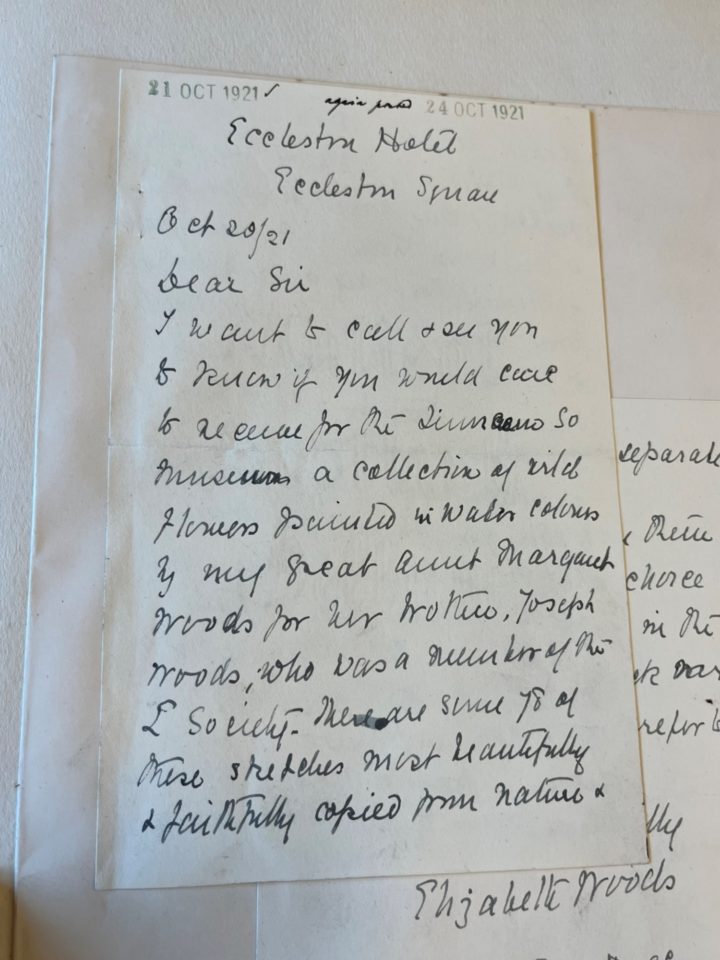
Letter from Elizabeth Woods to Benjamin Daydon Jackson, 20th October 1921 (MS/504)
Who, then, was Margaret Woods, and how did this item end up in the Linnean Society archive?
Margaret Woods (1778-1868) was born in Stoke Newington on 13th February 1778, to Joseph Woods and Elizabeth Hoare. Part of a strong Quaker family, she and her mother were heavily involved in the Society of Friends, and she is interred in the Friends Burial Ground at Lewes. The connection to the Linnean Society can be found at the start of this volume, where two letters are pasted in.
Dated 20th October and 5th December 1921, Elizabeth Woods (the great niece of Margaret) writes to Benjamin Daydon Jackson (Secretary of the Linnean Society) offering to donate the volume of her great aunt's to the Society. She explains that it contains ‘sketches most beautifully and faithfully copied from nature’ and that Margaret completed the work for her brother, Joseph Woods, who was a Fellow.
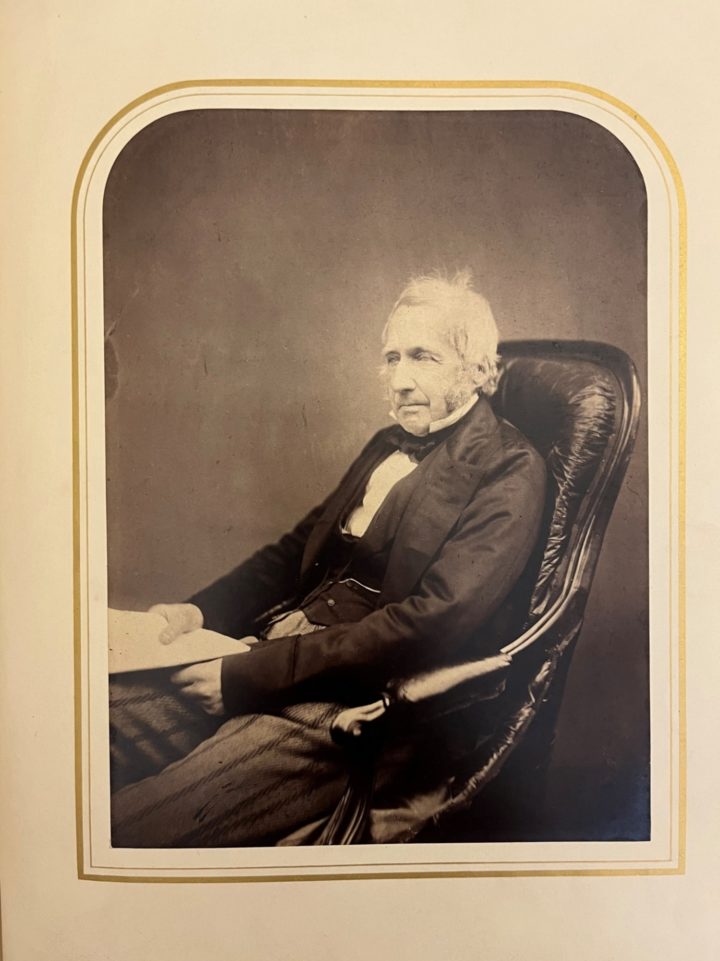
Joseph Woods portrait (LSPC/94)
Joseph Woods (1776-1864) was a successful architect, botanist and geologist. A Fellow of the Linnean Society since 1801, he formed the London Architectural Society in 1806 and acted as its first President.
During his lifetime, Joseph travelled widely on the Continent, and we have several of his manuscripts in the Linnean Society archive relating to his trips and discoveries. This includes his travel journals from France in 1830-1831 (MS/57, currently on display in our Naturalists’ Notebooks exhibition) as well as many Society Papers, including ‘Observations on the botany of the Netherlands' (SP/1292) and ‘Notes on a botanical ramble in the north of Spain’ (SP/1295).
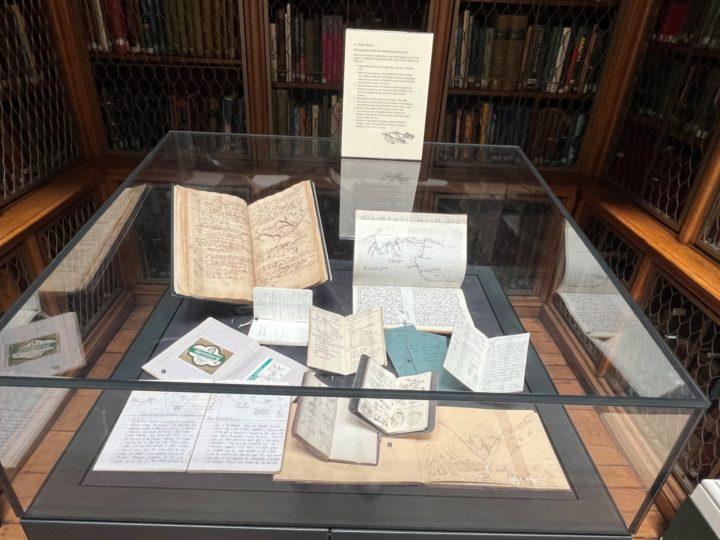
Display case for the Naturalists' Notebooks exhibition

Travel journal - Joseph Woods (MS/57)
Woods’ hugely popular publication, ‘Tourist’s Flora’, (1850) was a descriptive catalogue of plants and ferns of the British Isles and various European countries. It was regarded as the go to volume for any seasoned traveller with an interest in botany.
Born just two years apart, Margaret and Joseph appear to have been close throughout their lives, with letters surviving between them when Joseph went off on his travels. Neither sibling married, and they lived together for a number of years in Lewes before Joseph’s death in 1864 and Margaret’s in 1868. They were also buried alongside each other.
The fact that Margaret produced these beautiful sketches for her brother adds another level of interest to this volume. One wonders if they were completed merely as a gift for her beloved brother, or perhaps to assist him in his botanical work? Or maybe it was both.
Either way, the volume serves as a striking visual record of the industrious activities of Margaret Woods as an amateur botanist, travelling great distances to continue her studies, as well as a permanent reminder of a shared interest between a devoted brother and sister.
